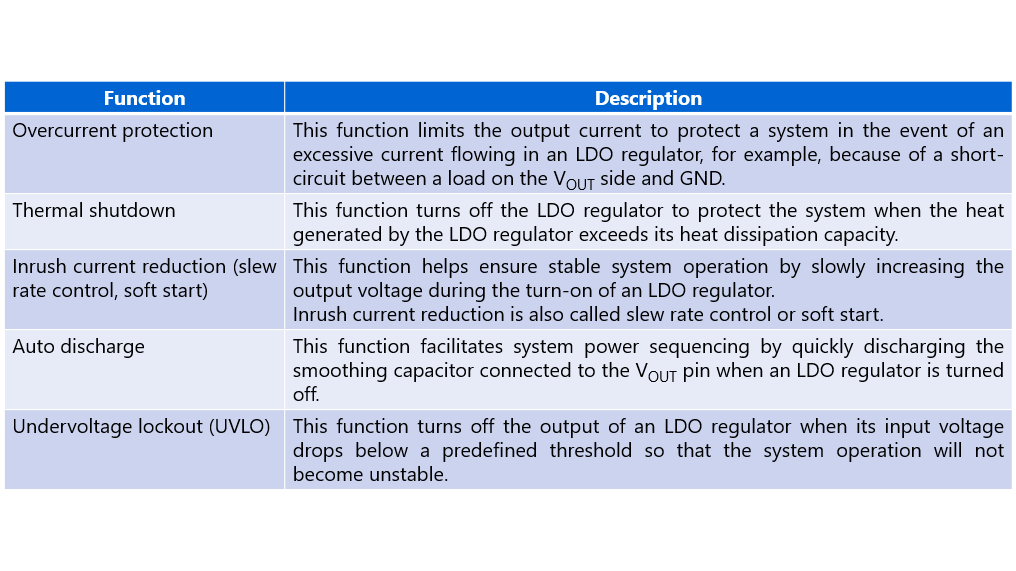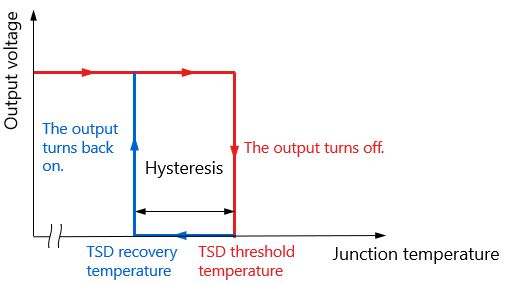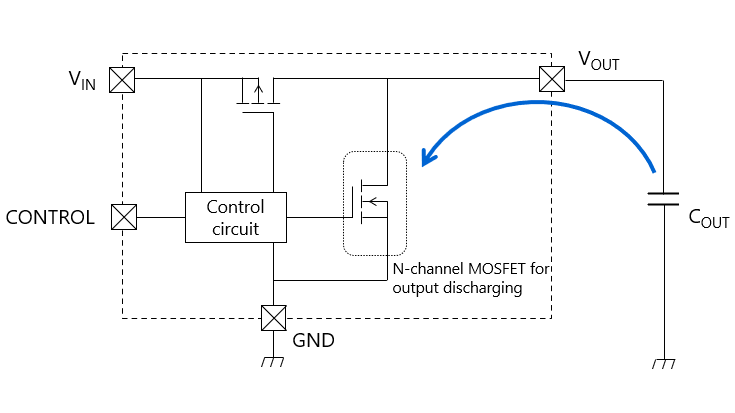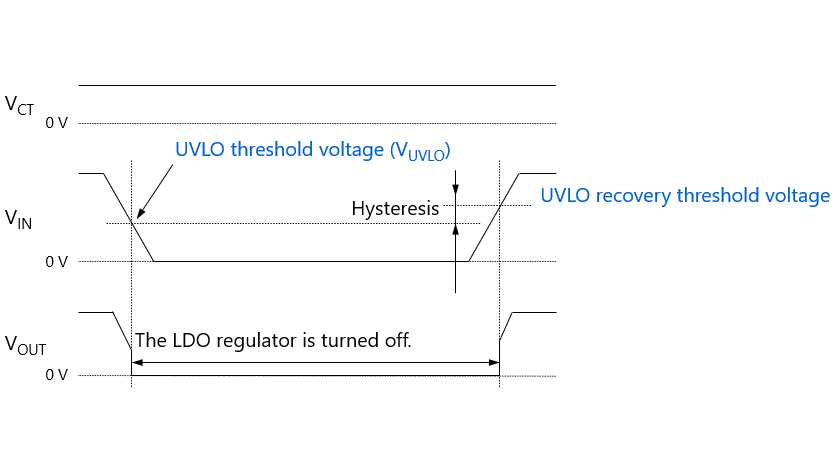-
My ToshibaSemicon
- 반도체 탑
-
애플리케이션Automotive
Body Electronics
xEV
In-Vehicle Infotainment
Advanced Driver-Assistance Systems (ADAS)
Chassis
IndustrialInfrastructure
BEMS/HEMS
Factory Automation
Commercial Equipment
Consumer/PersonalIoT Equipment
Healthcare
Wearable Device
Mobile
Computer Peripherals
-
제품자동차 디바이스
Discrete Semiconductor
다이오드
트랜지스터
로직 IC
Analog Devices
Digital Devices
Wireless Devices
※
: Products list (parametric search)
파워반도체※
: Products list (parametric search)
Isolators/Solid State RelaysPhotocouplers
Digital Isolators
Solid State Relays
Fiber Optic Transmitting Modules
※
: Products list (parametric search)
MOSFETsIGBTs/IEGTs바이폴라 트랜지스터※
: Products list (parametric search)
다이오드※
: Products list (parametric search)
마이크로컨트롤러모터 드라이버 ICIntelligent Power ICs※
: Products list (parametric search)
전원관리IC리니어 IC※
: Products list (parametric search)
범용로직IC리니어 이미지 센서기타 제품용 IC기타 제품용 IC
※
: Products list (parametric search)
-
개발/설계 지원
-
기술 자료
- 구매처
- 부품 번호 & 키워드 검색
- 상호 참조 검색
- 파라미터 검색
- 재고 확인 및 구매
This webpage doesn't work with Internet Explorer. Please use the latest version of Google Chrome, Microsoft Edge, Mozilla Firefox or Safari.
3글자 이상 입력하세요. Search for multiple part numbers fromhere.
The information presented in this cross reference is based on TOSHIBA's selection criteria and should be treated as a suggestion only. Please carefully review the latest versions of all relevant information on the TOSHIBA products, including without limitation data sheets and validate all operating parameters of the TOSHIBA products to ensure that the suggested TOSHIBA products are truly compatible with your design and application.Please note that this cross reference is based on TOSHIBA's estimate of compatibility with other manufacturers' products, based on other manufacturers' published data, at the time the data was collected.TOSHIBA is not responsible for any incorrect or incomplete information. Information is subject to change at any time without notice.
3글자 이상 입력하세요.
2-4. Inrush current reduction function of LDO regulators
When the input voltage rises from 0 V and reaches the minimum operating voltage, an LDO regulator turns on to supply a regulated output voltage. At this time, the internal error amplifier drives the output transistor between the VIN and VOUT pins with the maximum drive capability to raise the output voltage to the programmed level. Once the output voltage reaches the programmed level, the LDO regulator tries to maintain it at that level. However, the internal circuit delay, for example, might cause the output voltage to overshoot, exceeding the rated voltage of the load IC or circuit.
In addition, a large inrush current flows into the LDO regulator to charge the output smoothing capacitor connected to the VOUT pin. Inrush current occurs during the period from the time when the LDO regulator turns on to the time when the output voltage stabilizes. If the VIN pin is connected with a board trace with large impedance, the input voltage might sag because of a voltage drop that occurs across the board trace impedance due to inrush current. Consequently, the LDO regulator is unable to produce an output voltage at a normal level.
The inrush current limiting function prevents these conditions.
After the LDO regulator turns on, it raises the output current slowly while limiting inrush current, thereby suppressing the output voltage overshoot and the input voltage drop. Therefore, inrush current limiting helps improve system stability.
Inrush current limiting is also called slew rate control or soft start.
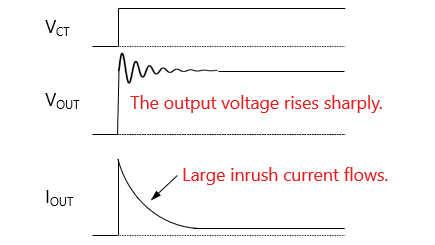
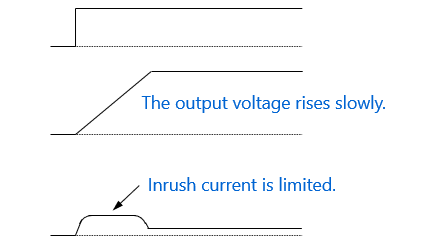
The following links also provide a description of inrush current reduction:
Application note: Basics of Low-Dropout (LDO) Regulator ICs
FAQ: Large inrush current flows when an LDO is enabled. What can I do to prevent this?
You can perform a parametric search of LDO regulators with an inrush current reduction function:
Parametric search of LDO regulators with an inrush current reduction function
Chapter2 Convenient functions of LDO
Related information
- Products
Low-Dropout Regulators (LDO Regulators) - Applidcation Notes
Application Notes - FAQs
LDO Regulators - Parametric Search
LDO Regulators - Stock Check & Purchase
Stock Check & Purchase


